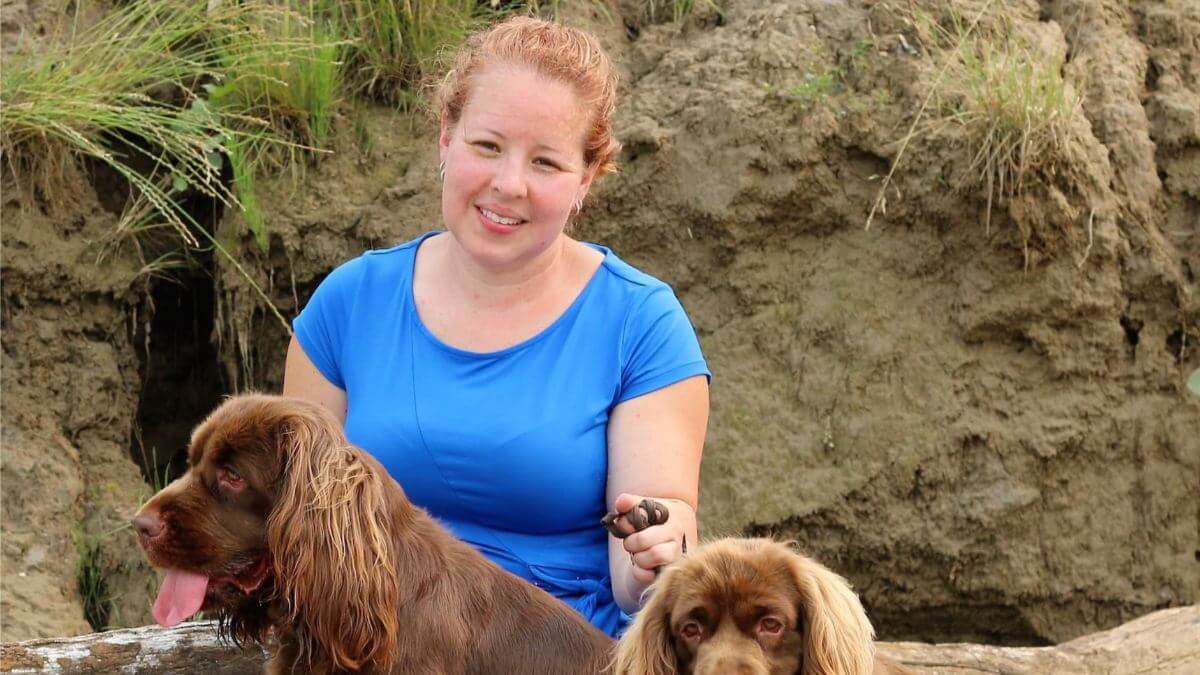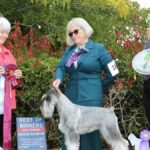Interview with Katie Tuttle, Breeder of Brass Lite Sussex Spaniels
- Please tell us a little bit about yourself. Where do you live? How many years in dogs? How many years as a breeder? What is your kennel name?
- What is your “process” for selecting show puppies? Performance puppies?
- In your opinion, is your breed in good condition overall? Any trends that warrant concern?
- As a Preservation Breeder, can you share your thoughts on the sport today? How’s the judging these days? What do you think about the number of shows?
- In your opinion, is social media good for the sport? Is it harmful?
- What are the biggest challenges facing the dog show community as a whole today and how can these be addressed?
- What are some of the positive changes you’ve seen in the sport over the past decade?
1. I live in Middleport, New York, about 40 minutes from Buffalo. I have been around dogs and horses my whole life. I’ve been breeding Sussex Spaniels since 2008. I continued with my parents’ kennel name, Brass Lite.
2. Attitude is a big thing for me. It is the first thing I look for, then I look at structure and movement. Coming from breeding and showing Arabian Horses, beauty and function need to go together. It helps if you can get other breeders who don’t know your breed to give you
an opinion.
3. The Sussex Spaniel is considered a vulnerable breed with a small population, which can increase the risk of genetic disorders due to limited genetic diversity. Collaboration with other breeders has helped to maintain genetic diversity and prevent the loss of valuable traits within the breed. A trend that warrants some concern is forgetting to remember that the same dog in the Conformation ring should be able to go out in the field and work.
4. I view the current state of the dog show community with a mix of optimism and concern. On one hand, there are many positive aspects to appreciate, such as the continued dedication to preserving and promoting breeds, the increasing emphasis on health and welfare, and the opportunities for networking and education. On the other hand, there are also challenges that need to be addressed to ensure the long-term sustainability and relevance of the sport. Regarding judging, I believe there have been improvements, with a greater emphasis on Breed Standards, health, and temperament. Judges are increasingly educated about the specific characteristics of each breed and are encouraged to prioritize soundness and function over cosmetic features. However, there is still room for improvement, particularly in ensuring consistency and transparency in judging. As for the number of shows, while it provides opportunities for exhibitors to showcase their dogs and compete, the sheer volume of events can be overwhelming and may contribute to declining participation. It’s essential to strike a balance between providing ample opportunities for competition and ensuring that shows remain financially viable and attractive to a broader range of exhibitors and spectators. While there are challenges facing the dog show community, there are also many positive aspects to celebrate. By working together as a community and remaining committed to the preservation and promotion of breeds, I believe we can overcome challenges and ensure a bright future for the sport of dogs.
5. Through social media, breeders can educate the public about different breeds, responsible breeding practices, health considerations, and the importance of preserving genetic diversity. However, social media can sometimes exacerbate conflicts within the community. Public disputes can harm relationships and undermine collaborative efforts. It’s essential for breeders and enthusiasts to use social media responsibly, prioritize accurate information and ethical practices, and engage in constructive dialogue.
6. The dog show community faces significant challenges today, and addressing them requires collaboration, innovation, and a commitment to the well-being of dogs and the sport itself. There has been a decline in participation, with fewer breeders, exhibitors, and spectators attending events. This decline can be attributed to various factors, including changing societal attitudes toward pet ownership, increased competition from other canine activities, and challenges in attracting younger generations. Addressing this challenge requires highlighting the importance of preserving Breed Standards, promoting responsible breeding practices, and fostering camaraderie within the community. Strategies such as offering incentives for participation, providing mentorship programs for newcomers, and leveraging social media to reach a broader audience can help to attract new participants and retain existing ones.
7. There has been a notable shift towards prioritizing the health and welfare of dogs within the sport. Breed clubs, kennel clubs, and individual breeders have implemented health screening programs, DNA testing for hereditary conditions, and guidelines for responsible breeding practices. This focus on health has led to a greater awareness of hereditary diseases and structural conformation issues, with efforts aimed at promoting healthier, more functional dogs. Positive changes reflect a growing commitment within the dog show community to uphold the integrity of the sport, promote the well-being of dogs, and ensure its continued relevance and appeal in an ever-changing world.








